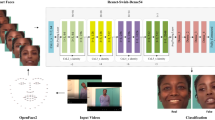Abstract
Deepfake algorithms can make forged pictures and videos that people cannot differentiate them from true ones. The suggestion of technology that locate and prove the truth of virtual visual media is as a result essential. Deepfakes generates realistic forged images or videos of targeted persons by swapping their faces another person saying or doing things that are not really done by them and public start trusting in such forged videos, as it is not identifiable with the normal human eye. This paper offers a survey of tools and algorithms used to make deepfakes and, additional significantly, methods to locate deepfakes. We present huge discussions on challenges, studies, advances and strategies associated to deepfake. By reviewing the history of deepfakes and cutting-edge deepfake detection strategies, this gives a comprehensive assessment of deepfake techniques and helps the development of latest and more robust strategies to deal with an increasing number of tough deepfakes.
Access this chapter
Tax calculation will be finalised at checkout
Purchases are for personal use only
Similar content being viewed by others
References
Tewari A, Zollhoefer M, Bernard F, Garrido P, Kim H, Perez P, Theobalt C (2018) High-fidelity monocular face reconstruction based on an unsupervised model-based face autoencoder. IEEE Trans Pattern Anal Mach Intell. https://doi.org/10.1109/TPAMI.2018.2876842
Zhang H, Xu T, Li H, Zhang S, Wang X, Huang X, Metaxas DN (2019) StackGAN++: Realistic image synthesis with stacked generative adversarial networks. IEEE Trans Pattern Anal Mach Intell 41(8):1947–1962
Lyu S (29 Aug 2018). Detecting deepfake videos in the blink of an eye. Retrieved from https://theconversation.com/detecting-deepfake-videos-in-the-blink-of-an-eye-101072
Korshunov P, Marcel S (2019) Vulnerability assessment and detection of deepfake videos. In: The 12th IAPR international conference on biometrics (ICB), pp 1–6.
Xuan X, Peng B, Dong J, Wang W (2019) On the generalization of GAN image forensics. https://arXiv.com/1902.11153.
Agarwal S, Varshney LR (2019). Limits of deepfake detection: A robust estimation viewpoint. https://arXiv.com/1905.03493.
Sabir E, Cheng J, Jaiswal A, AbdAlmageed W, Masi I, Natarajan P (2019). Recurrent convolutional strategies for face manipulation detection in videos. In: Proceedings of the IEEE conference on computer vision and pattern recognition workshops, pp 80–87
Guera D, Delp EJ (2018, Nov) Deepfake video detection using recurrent neural networks. In: 2018 15th IEEE international conference on advanced video and signal based surveillance, IEEE, AVSS, pp 1–6
Li Y, Chang MC, Lyu S (2018, Dec) In ictu oculi: exposing AI created fake videos by detecting eye blinking. In: 2018 IEEE international workshop on information forensics and security (WIFS), IEEE, pp 1–7
Li Y, Lyu S (2019). Exposing deepfake videos by detecting face warping artifacts. In: Proceedings of the IEEE conference on computer vision and pattern recognition workshops, pp 46–52
Yang X, Li Y, Lyu S (2019, May). Exposing deep fakes using inconsistent head poses. In: 2019 IEEE international conference on acoustics, speech and signal processing (ICASSP), IEEE, pp 8261–8265
Afchar D, Nozick V, Yamagishi J, Echizen I (2018, Dec) MesoNet: a compact facial video forgery detection network. In: 2018 IEEE international workshop on information forensics and security (WIFS). IEEE, pp 1–7
Nguyen HH, Yamagishi J, Echizen I (2019, May). Capsule-forensics: using capsule networks to detect forged images and videos. In: 2019 IEEE international conference on acoustics, speech and signal processing (ICASSP), IEEE, pp 2307–2311
Author information
Authors and Affiliations
Corresponding author
Editor information
Editors and Affiliations
Rights and permissions
Copyright information
© 2021 Springer Nature Singapore Pte Ltd.
About this paper
Cite this paper
Deshmukh, A., Wankhade, S.B. (2021). Deepfake Detection Approaches Using Deep Learning: A Systematic Review. In: Balas, V.E., Semwal, V.B., Khandare, A., Patil, M. (eds) Intelligent Computing and Networking. Lecture Notes in Networks and Systems, vol 146. Springer, Singapore. https://doi.org/10.1007/978-981-15-7421-4_27
Download citation
DOI: https://doi.org/10.1007/978-981-15-7421-4_27
Published:
Publisher Name: Springer, Singapore
Print ISBN: 978-981-15-7420-7
Online ISBN: 978-981-15-7421-4
eBook Packages: EngineeringEngineering (R0)




